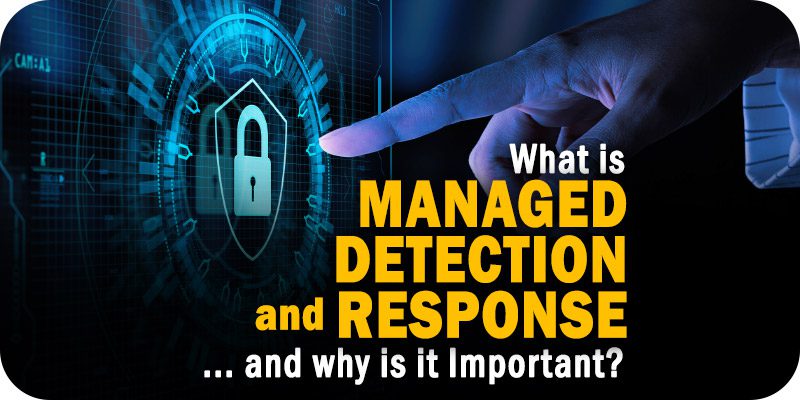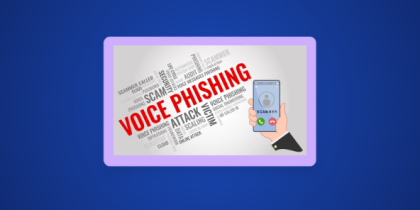With cyberattacks growing in frequency and sophistication, many organizations struggle to detect and respond before damage occurs. That’s where MDR in cyber security Managed Detection and Response comes in.
Imagine discovering that a hacker has been inside your network for weeks quietly stealing data while your defenses remained silent. This is the reality MDR services are built to prevent.
MDR provides 24/7 threat monitoring, human led incident response, and advanced analytics that help businesses move from a reactive stance to a proactive cyber defense model.
A 2024 IBM Security Report found that companies using MDR cut their average breach response time by 52 percent compared to traditional in house teams.

What Is MDR?
MDR is a managed cybersecurity service that combines real time monitoring, threat hunting, and expert incident response. Unlike static security tools, MDR blends automation with human analysis to detect and contain threats across endpoints, networks, and cloud environments.
According to Palo Alto Networks, organizations using MDR detect breaches 60 percent faster than those relying on internal teams alone.
Why MDR Matters in Modern Cyber Security
Now that you know what MDR is, let’s look at why it’s so valuable today.
Modern attacks exploit speed, human error, and fragmented visibility. MDR services counter these by offering constant surveillance, threat hunting, and expert driven incident containment.
Key advantages include:
- Continuous 24/7 monitoring through a managed Security Operations Center (SOC).
- Reduced alert fatigue and faster mean-time-to-detect (MTTD).
- Access to certified threat analysts and forensic investigators.
- Broader coverage across cloud, endpoint, and identity systems.
Cisco reports that MDR users experience 70 percent fewer undetected incidents than organizations running solo SOCs.
How MDR Works
Let’s break down how Managed Detection and Response actually functions inside an organization.
Each MDR provider combines automation with human expertise to continuously detect, investigate, and neutralize attacks.
1. Monitoring & Collection
In this phase, MDR tools collect and centralize security telemetry from sources like endpoints, cloud applications, firewalls, and network devices.
All these logs are consolidated within SIEM or XDR systems, giving analysts a unified view of activity.
Continuous monitoring ensures no suspicious action or anomaly escapes detection across your environment.
Example: An MDR platform detects unusual login attempts from multiple countries on the CEO’s account within minutes of their occurrence.
2. Threat Detection
Once the data is collected, machine learning and behavioral analytics come into play to identify indicators of compromise (IOCs).
The system compares activity patterns against known malware behaviors and global threat intelligence databases.
This enables MDR to spot stealthy or zero day attacks that would bypass signature based tools.
Example: The MDR engine flags an employee downloading encrypted files at midnight a behavior inconsistent with their usual working hours.
3. Investigation
When an alert arises, MDR analysts validate the threat, determine its severity, and trace the attacker’s pathway.
They correlate data across endpoints, cloud systems, and user accounts to build a clear picture of the incident.
This reduces false positives and ensures teams focus only on verified, high risk threats.
Example: Analysts discover that a suspicious email led to a malicious macro that created a backdoor in the HR server confirming a phishing based intrusion attempt.
4. Response
After confirming the threat, the MDR team acts immediately to contain and neutralize it.
Actions may include isolating infected devices, blocking malicious IP addresses, or resetting compromised credentials.
Some MDR providers even automate responses to stop attacks in seconds.
Example: When ransomware begins encrypting a shared drive, the MDR system automatically quarantines the affected workstation and blocks the attacker’s command and control server.
5. Reporting & Improvement
After the incident is contained, MDR providers generate detailed post incident reports outlining what happened, how it was resolved, and what can be improved.
These insights feed into ongoing threat intelligence and compliance documentation, helping organizations strengthen policies and controls.
Example: A financial firm receives a report showing 92% of blocked threats came from malicious email attachments prompting tighter email security policies.
Real World Use Cases of MDR in Cyber Security
These examples show how diverse organizations use MDR to improve cyber resilience, ensure compliance, and speed up response.
1. Small & Mid Sized Businesses (SMBs)
SMBs without an internal SOC rely on MDR for affordable 24/7 monitoring and automated incident response.
“We’re a 60 person company with one IT admin. Our MDR provider caught a ransomware attempt at 2 AM and stopped it before it spread.”
— Reddit user u/MDL1983
2. Large Enterprises
Enterprises integrate MDR to complement existing SOCs with advanced threat hunting.
“We use MDR as an extension of our SOC—it correlates data from EDR, network, and identity logs we’d otherwise miss.”
— Reddit user u/R1skM4tr1x
Gartner Market Guide 2024 shows 40 percent of Fortune 1000 firms now employ MDR services.
3. Regulated Industries
Finance, healthcare, and government sectors adopt MDR to meet HIPAA, PCI-DSS, and GDPR monitoring mandates.
IBM Cost of a Data Breach Report 2024 found MDR users in regulated industries reduced breach costs by 28 percent.
4. Cloud & Remote Work Environments
MDR delivers unified visibility across multi cloud and hybrid infrastructures, ideal for distributed teams.
“After moving to AWS and Office 365, our MDR became our single pane of glass. It sees everything our internal tools miss.”
— Reddit user u/Brees504
5. Ransomware Response & Forensics
During active breaches, MDR teams isolate systems and recover data quickly.
“Our MDR vendor contained a ransomware outbreak in 45 minutes — faster than our IT could react.”
— Reddit thread
Ponemon Institute 2024 found MDR usage reduces ransomware recovery time by 47 percent.
MDR vs EDR vs XDR vs MSSP
| Model | Scope | Human Involvement | Response Level |
|---|---|---|---|
| EDR | Endpoints only | Low | Alerts for device threats |
| XDR | Endpoints + Network + Cloud | Medium | Automated correlation |
| MSSP | Managed monitoring | Low | Alerting only |
| MDR | End-to-end detection & response | High | Active investigation & containment |
Key Benefits of Using MDR Services
MDR delivers measurable business outcomes:
- 24/7 threat monitoring and response
- Reduced alert fatigue through expert triage
- Access to elite cybersecurity analysts
- Compliance support for audits
- Predictable costs compared with building a SOC
How to Choose the Right MDR Provider
Selecting the right MDR partner requires balancing coverage, responsiveness, and transparency.
- 24/7 monitoring and response capability
- Integration with existing EDR or SIEM
- Strong SLA commitments for containment time
- Human in the loop threat hunters
- Transparent reporting and remediation plans
Final Words
MDR in cyber security bridges the gap between technology and human expertise.
It provides small teams and large enterprises alike with continuous detection, rapid containment, and data driven resilience.
As threats evolve, organizations that adopt MDR aren’t just reacting—they’re anticipating and neutralizing attacks before they strike.
FAQs
EDR protects endpoints only; MDR adds human led investigation and response across multiple vectors.
Yes it offers enterprise grade security without needing a dedicated SOC.
Leading vendors include CrowdStrike, Red Canary, Expel, Arctic Wolf, and Palo Alto Networks.
MDR is essential because it helps businesses detect advanced cyber threats quickly, minimize damage from breaches, and improve overall security posture without the need for a large in-house SOC (Security Operations Center).
MDR solutions can detect various cyber threats such as ransomware, phishing, insider threats, malware infections, and advanced persistent threats (APTs).
Traditional antivirus tools rely on signature-based detection, while MDR uses advanced analytics, AI, and human expertise to identify and respond to new, unknown, and evolving threats.
Key benefits include 24/7 monitoring, faster threat detection, incident response support, reduced attack impact, compliance assistance, and access to expert cybersecurity analysts.








